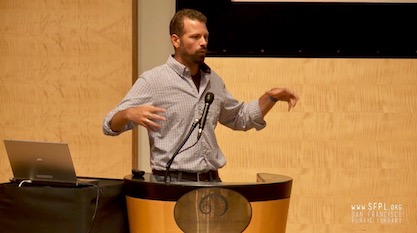 Intelligent Design
Intelligent Design
 Life Sciences
Life Sciences
Nathan Lents and the Wisdom of Testicles


Darwinist Nathan Lents thinks testicles are nuts. Or, at least, he thinks they’re poorly designed. He thinks they should be inside the body, not outside. Says Lents, author of the new book Human Errors: A Panorama of Our Glitches, from Pointless Bones to Broken Genes, writing for Undark:
From an evolutionary standpoint, after all, testicles are the most important thing about a man — without them, he wouldn’t exist at all. And there they are, just sitting out in the open. Exposed. Vulnerable. What kind of design is this?
Of course, there is an explanation. Human sperm cells develop better at a slightly lower temperature than the rest of our body seems to prefer. Humans aren’t alone in this respect: Most male mammals have testicles that migrate through the inguinal canal during gestation or infancy and eventually take up residence outside the abdominal cavity, suspended in a temperature-sensitive adjustable hammock. This allows the sperm cells to develop at the temperature that’s just right.
But is it really just right? Only if you accept that the ideal temperature is a special fixed property of the universe, like Planck’s constant or the speed of light in a vacuum. Evolution could have simply tweaked the parameters of sperm development so the ideal temperature of its enzymatic and cellular processes was the same as the rest of the body’s processes. Hematopoiesis, the creation of new blood cells, is a close parallel of sperm development in terms of the tissue architecture and cellular events involved, yet bone marrow doesn’t grow outside our body. Nor do ovaries, for that matter.
The fact is that there is no good reason that sperm development has to work best at lower temperatures. It’s just a fluke, an example of poor design. If nature had an intelligent designer, he or she would have a lot to answer for. But since natural selection and other evolutionary forces are the true designers of our bodies, there is no one to question about this. We must interrogate ourselves: Why are we like this?
Is testicular design “an example of poor design”? Perhaps not. Testicles, unlike bone marrow, make cells that are used only intermittently. They are stored until just the right moment, and then it’s a dash to the finish line. From a design perspective, it makes perfect sense to grow and store sperm outside the body, where it’s cooler (in the fridge, so to speak), where their metabolic needs are reduced. Why have them all revved up in the scrotum, wasting energy swimming in circles, doing nothing? When they are released into the female reproductive tract, sperm warm up and come to life, and, expending prodigious energy, race to the ovum.
Sperm are produced and stored in a cooler external environment for the same reason we refrigerate food; for preservation, until it’s needed.
Nothing if Not Ironic
So is testicular design pretty good? I suspect so, but maybe it is a design flaw. Reproductive physiology is elegant and complex, and there’s much to be learned. What Lents does, ironically (Darwinism is nothing if not ironic), is use intelligent design science to discredit… intelligent design. After all, if there is no design in nature, there is no poor design. Lents makes the classic Darwinist blunder: he denies that intelligent design is science, and, in the same breath, provides devilishly cunning scientific arguments against it. “Poor” design presupposes the inference to design. But there are poor arguments — like Lents’s argument against the wisdom of testicles.
Design science compels us to look for deeper purposes in biology. That is exactly what Lents is doing with his arguments that some design is “poor design.” He is relying on intelligent design science to explore purposes in biology. The investigation of purpose in biology — the evidence-driven exploration of good design and poor design — is not nuts at all. It’s just good science.
Dr. Michael Egnor is Professor of Neurosurgery at the State University of New York, Stony Brook.
Photo: Nathan Lents speaking at the San Francisco Public Library (screen shot), via YouTube.
